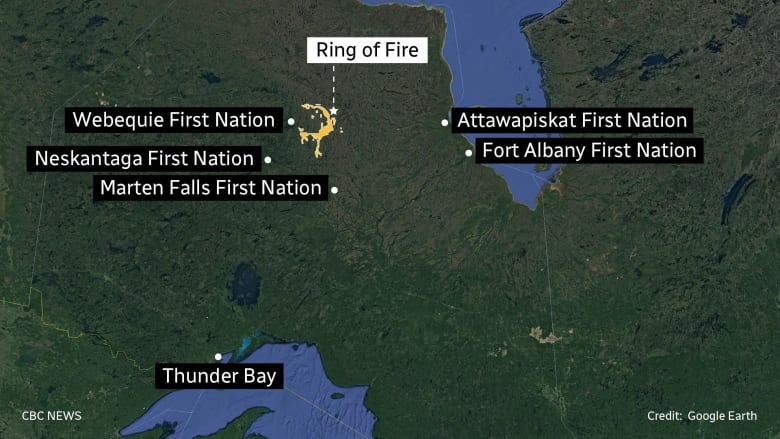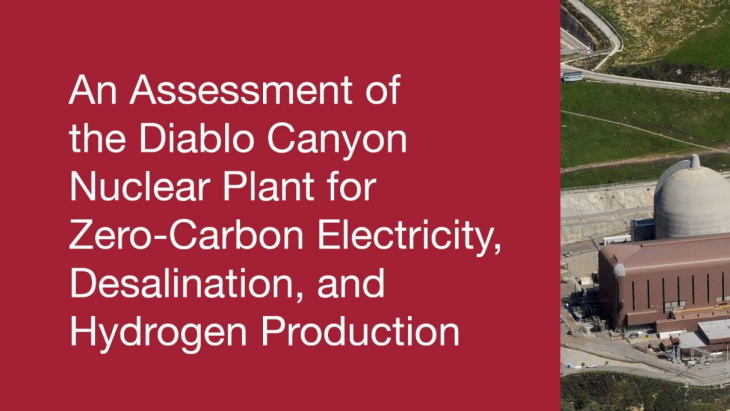Doug Ford's hopes for Ontario's electric vehicle industry hinge on mining its Ring of Fire
Mining project will be 'massive win' for First Nations, says
premier, despite Indigenous opposition
Premier Doug Ford's government is touting Ontario as a future electric vehicle manufacturing hub, and linking that to a fresh push for a huge mining development in the northern part of the province.
Ford's Progressive Conservatives want to lure the big automakers to produce electric vehicles in southern Ontario. A key part of that strategy involves opening up the so-called Ring of Fire mineral deposit, located more than 500 kilometres north of Thunder Bay in an area home to Indigenous people.
The Ring of Fire was originally promoted as a source of chromite, an important component in steel. Now the hype centres on its supply of minerals used in EV batteries and energy storage systems, including cobalt, lithium, manganese, nickel, graphite and copper.
Ontario's mini-budget — known as the fall economic statement — featured the Ring of Fire prominently when it was presented last week, and explicitly linked the mining project to EV battery production.
Ford spoke enthusiastically about both electric vehicles and the Ring of Fire on Monday.
"We're doing it," Ford said, when CBC News asked about the government's plans for the mining project, during an unrelated news conference in Bradford, Ont., just north of Toronto.
"We're going to be the number one manufacturer of electric battery operated cars in North America," Ford said. "We're not only going to manufacture the batteries here, but also manufacture the cars."
Ford said First Nations are being consulted about the Ring of Fire.
"We do nothing up there without making sure there's a buy-in from the vast majority of the communities," Ford said.
"This is going to benefit so many people from First Nations communities up there. They're going to have good-paying jobs. They're going to be part of the investments. They're going to be able to build roads, not not just to get up to the mines, but also be to get goods up there a lot quicker as well. This is just a massive win for the First Nations community."
However, Ford's enthusiasm is not universally matched among Indigenous leaders in northern Ontario.
"There is going to be opposition, if this continues the way it is and the Ford government or any future government doesn't recognize the rights of our people, it's going to be a strong stance," said Chief Wayne Moonias of the Neskantaga First Nation in an interview Monday.
Neskantaga is one of three First Nations — along with Attawapiskat and Fort Albany — that declared a moratorium on Ring of Fire development earlier this year.
"People are making money, a lot of money, off of our land and there is no consent that has been given by our people, our First Nation," said Moonias. "Rightfully the First Nations people of Neskantaga should be the ones to determine how those things are going to be carried out, if in fact they're going to be carried out."
Ring of Fire mineral claims cover a territory around 100 kilometres in diameter, including the upper portion of the Attawapiskat River and its watershed.
"I don't think First Nations, whose land this has always been and still is solely, appreciate anybody else telling them what's good for them," said Kate Kempton, a partner with the law firm OKT. She represents Attawapiskat First Nation in a recent court challenge of the province granting mineral exploration permits in the Ring of Fire to the mining firm Juno Corp.
"This situation with the Ring of Fire is, in my view, explosive, and the public is probably going to see that in 2022," said Kempton.
Ford's government is proposing significant changes to provincial land-use planning law for northern Ontario that appear designed to clear hurdles to developing the Ring of Fire.
One change would scrap a requirement that 225,000 square kilometres of northern Ontario have protected-area status. That's nearly double the size of New Brunswick and Nova Scotia combined.
The changes that the government itself describes as "the most significant" have to do with the First Nations membership of a joint advisory body on land-use planning in the Far North. The amendments would allow the government to create the advisory body with the participation of just seven of the 31 First Nations in the region.
The amendments to the Far North Act are part of the omnibus bill tabled last week by Finance Minister Peter Bethlenfalvy along with his fall economic statement.
The act "creates unnecessary barriers to economic development," said Curtis Lindsay, press secretary to Greg Rickford, Ontario's minister of Indigenous affairs, northern development and mines.
He said the revised act will focus on "enabling the development of all-season roads, electrical transmission projects and mineral development while maintaining community-based land-use planning and environmental protections."
Bethlenfalvy drew a direct link between electric vehicles and the Ring of Fire in an interview on Friday with Superior Morning, a CBC Radio program broadcasting from Thunder Bay.
"We want to build the Ring of Fire," Bethlenfalvy said. "There's critical minerals there [that] go into electric vehicles, and we want to be the leader in North America, in Ontario, building electric cars."
He described the government's new push for the Ring of Fire as responding to the community.
"Prosperity should be in the north," said Bethlenfalvy. "We just want to open up the north for everyone, and we're going to do it with very sincere and open consultations."
The mining company that holds the vast majority of the claims in the Ring of Fire, Noront Resources, is currently the focus of a bidding war between two Australian mining firms, BHP Group and Wyloo Metals. Since the rival takeover bids began in May, Noront's share price has tripled, adding some $280 million to the company's value in just six months.
The two firms are now in talks about a joint takeover, with a deadline of Nov. 16 for NorOnt shareholders to accept the latest bid.
One of the biggest obstacles to getting minerals out of the Ring of Fire is that there are no all-season roads to its location.
Just last month the government launched two separate environmental assessments for sections of road that would link the Ring of Fire to the Webequie and Marten Falls First Nations and ultimately, to the provincial highway system.
In 2018, before becoming premier, Ford vowed to get roads built to the Ring of Fire "if I have to hop on that bulldozer myself."
The Ford government has budgeted roughly $1 billion for the road construction, but that commitment is not new for Ontario. Back in 2014, the then-Liberal government of Kathleen Wynne allocated $1 billion for the project as well.












